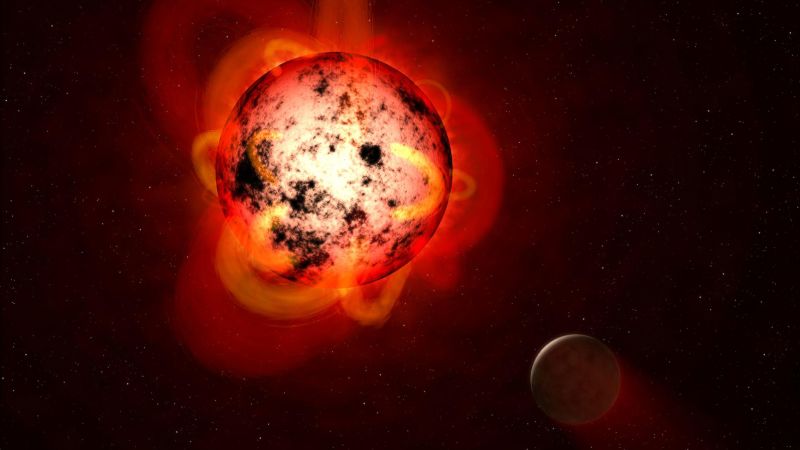There are at least three threads here that touch on "Drake's equations" and the chance for life (advanced or otherwise) elsewhere in the universe. I'll pick this thread to bump in order to tout John Gribbin's book The Reason Why: The Miracle of Life on Earth.
If I seem uninterested in works like that, that is because of
Google Scholar and
PubMed and
arXiv.org e-Print archive and similar sources.
I'll set a much lower goal and just try to summarize the Moon and its relation to the Probability of Life.
What was the chance for a large Moon to develop? The collision that created the Moon was associated with high levels of dust in the solar system; astronomy confirms that high levels of such dust are rare.)
What sources does he have on that claim? Do such sources discuss the longevity of such dost?
He does discuss the elemental mix of the solar system, and the effects of Jupiter's formation near what he calls the "snow line." (The giant planets are separated from the rocky planets at the point where oceans of hydrogen, ammonia etc. boil away.
That is correct and well-established. A complication is that Jovian planets can move away from where they formed.
Gibbin speaks of the three T's (Tilt, Tides, Tectonics) -- reasons why the Moon's creation was essential for advanced life.
The Moon's formation explains why the Earth orbits once every twenty-four hours, while Venus' spin is 243 times slower. The collision which created the Moon imparted spin, initially with 5-hour period. The off-center collision gave a Tilt to the axis of rotation: a perfect tilt to have seasons. And the continued presence of the Moon provides stability to that tilt, according to Gribbin, useful since extreme tilts would cause extreme temperatures at the poles. The moon also gave us our strong magnetic field.
Only partially correct. Axial tilt does not affect marine life very much, though it does affect freshwater life and land life. Low axial tilt would make very seasonal variation, while high axial tilt would make seasonal variation that is too great at high latitudes.
It is, however, correct that the Moon stabilizes our planet's spin precession, because without it, it would precess at about 1/3 of its current rate, and that would make its precession period close to typical periods in the Earth's orbit precession from perturbations by other planets. That leads to a risk of precession resonances, and a consequence of such resonances is greater amplitude of obliquity variations, like what Mars has. In fact, Mars's obliquity is chaotic over times more than a few tens of millions of years, making it essentially impossible to predict in detail. But if one was to go back in time, one could still predict Mars's obliquity over a few tens of millions of years.
Earth's rotation and the Moon's gravity also lead to Tides (plate tectonics are also needed for this) which helped ocean life to move to land. (Tides may also help cleanse and oxygenate the oceans.)
Needing tides to go onto the land? I believe that to be a big load of bull doo-doo.
Frogs and salamanders are mostly freshwater animals, though
Occurrence of Amphibians in Saline Habitats: A Review and Evolutionary Perspective | Herpetological Monographs
Streptophyta - Wikipedia - the algae closest to land plants are all freshwater algae.
Osmoconformer - Wikipedia and
Osmoregulation by Vertebrates in Aquatic Environments - Lillywhite - Major Reference Works - Wiley Online Library
Most marine invertebrates have the same salt content inside and out. Among vertebrates, hagfish are the same, but lampreys and jawed vertebrates have about 1/3 the salt content of the oceans. This seems like an adaptation to living in freshwater, to avoid having to excrete excess water. Marine fish have the opposite problem: losing water to the more-salty surrounds. They have two solutions: drinking seawater and excreting salt, and letting their body fluids have lots of urea, acting as a fake salt.
So early fish likely lived in freshwater, and that likely includes the fish that colonized the surrounding land, becoming amphibians.
The young Moon also worked, via tides, to heat the Earth's core. This extra heat had various benefits.
I'd like to see some numbers on t hat.
The collision which created the Moon also provided the Earth with a thin crust and a dense iron-rich core.
???
Gribbin quotes two scientists who say "plate tectonics are the central requirement for life on a planet." Tectonics were necessary both to create surface land and, due to feedbacks of greenhouse gases, for liquid water oceans. The constant roil at plate boundaries drives feedback loops. But there's more! Gribbin points out that plate tectonics -- creating and destroying mountains -- changes habitats, thereby serving as stimulus for Darwinian evolution.
Gribbin goes into more detail that I do. And this summary is limited to the Moon. Gribbin details many other special circumstances.
I don't think that the Earth is as aberrant as that. A good part of its surface geology is from its size. By the square-cube law, being larger means more heat flux from the interior, and thus more geological activity. Venus fits very well, by having lots of volcanic activity, even if it never got plate tectonics.
Plate tectonics isn't necessary for marine life, though it may be convenient for freshwater and land life.

